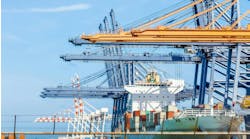Sometimes just getting started with automation can be the hardest step in a company’s warehouse automation journey. Understandably, there is reason to hesitate, investigate and authenticate whenever purchasing and integrating any new technology into your operations.
Many of the supply chain executives we speak to often express a concern that starting too early might render their chosen solution obsolete due to technology’s pace of change. Or they feel they have much to learn by observing the actions of other companies. There’s a feeling that they need to wait until the technology is fully mature and all the questions are answered.
The pace of technology will most likely not slow down. Fortunately, the inevitability of change is somewhat offset by the modularity, scalability and flexibility inherent in many of today’s automation solutions. Many of these technologies can be reconfigured and adapted to changing conditions and new processes. Software updates are often used to add new capabilities and functionality that were not available when the technology was originally deployed.
There are indeed lessons that can be learned from observing the experiences of others. However, there will also be challenges and issues directly inherent to your unique operations and the processes and applications you have in place. You won’t begin to uncover these until you commit to learning how to apply automation to your specific situation. Regardless of when you start your automation journey, you’ll still need to modify and realign your processes. You’ll encounter issues unique to your operation and those that no amount of planning could have foreseen.
For these reasons, there is no better time to get started with automation than now. Evaluate your options, understand your processes, speak to your providers, and above all else, put together a solid, strategic plan. Technology has advanced to the point that many of the challenges you currently face can be either solved—or significantly reduced—with automation technology that exists today.
For instance, dual-mode technology that uses natural features navigation enables warehouses to take an incremental approach to deploying automation solutions with minimal or no supporting systems or infrastructure. Operations that have not automated because they anticipate unavoidable process exceptions can leverage dual-mode vehicles to retain manual operation to help address these exceptions.
Forklifts with dual-mode automation technology can switch between manual and automated operations to accommodate dynamic changes in the production plan. They feature an intuitive user interface that trained employees can efficiently operate. The forklifts integrate with the warehouse management system in automated mode to ensure a consistent workflow customized to fit the operation.
A Case in Point
DHL Supply Chain recently deployed reach trucks in one of its distribution facilities. It is the company’s latest investment in its commitment to accelerating the digitalization of the end-to-end supply chain.
The deployment is an example of how companies can proceed with an automation installation. DHL Supply Chain has a proven process they put into action when assessing and integrating leading-edge technologies. They focus on those technologies that further their digital supply chain transformation and bring value to their operations. Most importantly, they worked closely with the technology provider and understood the actual installation is only one step in the automation journey.
After a thorough examination of the available technology and its operation and applications, the company identified pallet movement in its facilities as an excellent candidate for automation. They determined autonomous forklifts could increase the efficiency, accuracy and safety of double-deep pallet putaway and retrieval tasks without requiring any significant changes in the infrastructure.
Rather than inserting the automation into an existing manual process, the deployment involved designing a new process for how products flow in the warehouse, creating a manual-to-autonomous handoff zone between pallet storage and receiving and shipping. The autonomous forklifts operate in a dedicated warehouse area where access is limited to properly trained associates.
As part of its proven integration process, the company continually assesses the progress and performance of the installation, making modifications and adjustments as needed. For instance, DHL Supply Chain quickly realized that having pallets of fixed sizes with equal space between them on the rack improved automated pickup and putaway efficiency and accuracy.
DHL Supply Chain has been pleased with the results of the installation, which have surpassed the initial productivity goal. Before embarking on the installation, the company also developed and explored a list of use cases that they could implement to build on the success of this first installation and continue their automation journey.
As this installation demonstrates, no matter when you take your first step with automation, it will require planning and process adjustments. Even with robust planning, there will still be unique challenges you’ll need to work through and adjustments you’ll need to make.
That’s why the perfect time to begin your automation journey is now so you can discover those challenges and make the necessary adjustments that will prepare your operations for further automation. You can also move forward confidently, knowing that there are automation solutions available today that not only are based on proven technologies, but also offer the flexibility and scalability needed to continue to evolve your operations.
Jim Gaskell is global automation and emerging technologies director with forklift manufacturer Crown Equipment.



